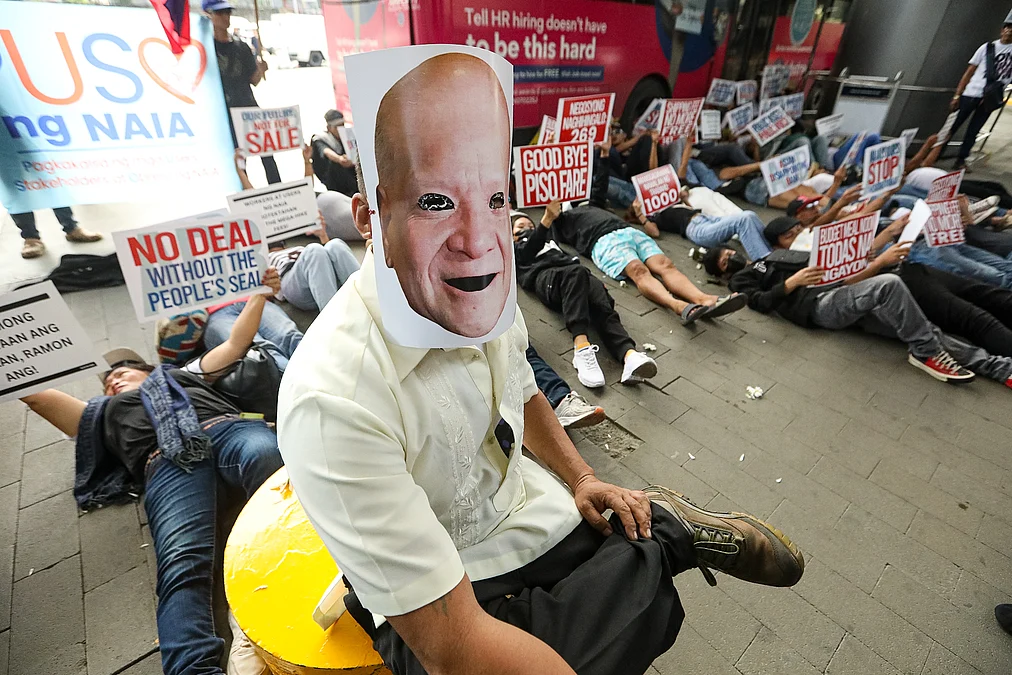By Christer Holloman,Contributor
Copyright forbes

US banks face higher costs and talent risks as new H-1B fees reshape hiring, outsourcing models, and global delivery strategies across financial services.
AFP via Getty Images
The U.S. financial services industry is bracing for ripple effects after President Donald Trump signed a proclamation introducing a $100,000 application fee for new H-1B visas. The move has injected uncertainty into the immigration system that underpins Wall Street’s access to global talent.
While the White House clarified that the fee applies only to new applicants and not current visa holders or renewals, the announcement prompted a flurry of emergency memos from firms including JPMorgan Chase and Goldman Sachs, warning employees on H-1B visas to avoid international travel until the rules were clear. Even with clarification, the long-term implications for how banks, asset managers and insurers source talent are significant.
Talent as a strategic asset
Financial institutions are among the largest sponsors of H-1B visas. Beyond trading desks and M&A teams, banks increasingly rely on data scientists, quantitative engineers and cybersecurity specialists, many of whom are foreign-born. These roles are central to the industry’s digital transformation agendas. With the U.S. approving about 400,000 H-1B applications last year, most for renewals, the fee threatens to narrow the pipeline of new arrivals. Immigration lawyers expect firms to become more selective in who they sponsor, reserving visas for only the most business-critical roles. For banks and insurers competing in areas such as artificial intelligence, payments, and digital assets, that constraint could slow innovation.
Global delivery models under pressure
The impact extends beyond direct hiring. India’s IT services sector, which supplies many of the technology contractors working inside American banks, will have to rethink its onshore-offshore model. The industry earns nearly 60 percent of its revenue from the U.S., and Indian nationals account for more than 70 percent of H-1B beneficiaries. Experts predict that banks’ vendor partners, including Tata Consultancy Services and Infosys, will accelerate offshore delivery and scale back the rotation of employees into U.S. client sites. That means more project work may be shifted to centers in India, Mexico, Canada and the Philippines. For financial institutions, this could complicate deal conversion, extend project timelines and reduce the speed of scaling new platforms.
Risk of brain drain
Global competitors are already eyeing opportunity. Canadian executives called the U.S. decision a “gift” that could help Toronto and Vancouver lure top engineers and quantitative analysts. European firms voiced similar optimism about attracting talent that might otherwise have pursued roles in New York or San Francisco. For Wall Street, the risk is clear: a reduction in the inflow of specialized skills at a time when rivals abroad are strengthening their positions in financial technology. In areas like blockchain, digital assets and algorithmic trading, losing even a small share of global expertise could tilt competitive dynamics.
MORE FOR YOU
Strategic responses
Financial firms are moving quickly to adapt. In the short term, companies are prioritizing visa renewals for existing staff and lobbying for legal challenges to the fee, which some lawyers argue could face hurdles in the courts. Longer term, expect more investment in global capability centers. Banks have already expanded operations in India and Latin America, not just as back offices but as hubs for data analytics, AI development and risk modeling. The H-1B changes are likely to accelerate that trend, reshaping the geography of innovation in finance. At the same time, institutions may increase hiring of U.S. citizens and green card holders for technology roles. That could drive up competition for a limited domestic talent pool and raise costs, especially as big technology companies chase the same candidates.
What leaders should do next
For senior executives in financial services, the H-1B fee is not just an HR or compliance issue. It is a strategic challenge with implications for competitiveness, cost structure and innovation. Firms should:
– Audit current visa dependency across critical projects and identify where offshore alternatives are viable.
– Reassess vendor contracts with IT service providers, incorporating new assumptions about delivery models and staffing.
– Double down on domestic talent pipelines, from graduate recruitment to partnerships with universities.
– Monitor regulatory developments closely, as legal challenges or additional policy shifts could reshape the landscape yet again.
A defining moment
Immigration has long been a driver of American finance, supplying the human capital behind trading algorithms, compliance systems and the digital interfaces that millions of customers use daily. By raising the cost of entry so dramatically, Washington risks pushing that expertise elsewhere.
For banks and asset managers, the message is unmistakable: talent strategy is now a core element of risk management. Whether the industry adapts by reshoring skills, expanding overseas hubs, or lobbying for policy change, the outcome will shape the future of global finance.
For more like this on Forbes, check out Structural Talent Mismatch Cripples The Financial Services Industry and Why Financial Services Needs A New Breed Of Leaders.
Follow Holloman for the latest insights on the future of finance and technology.
Editorial StandardsReprints & Permissions



